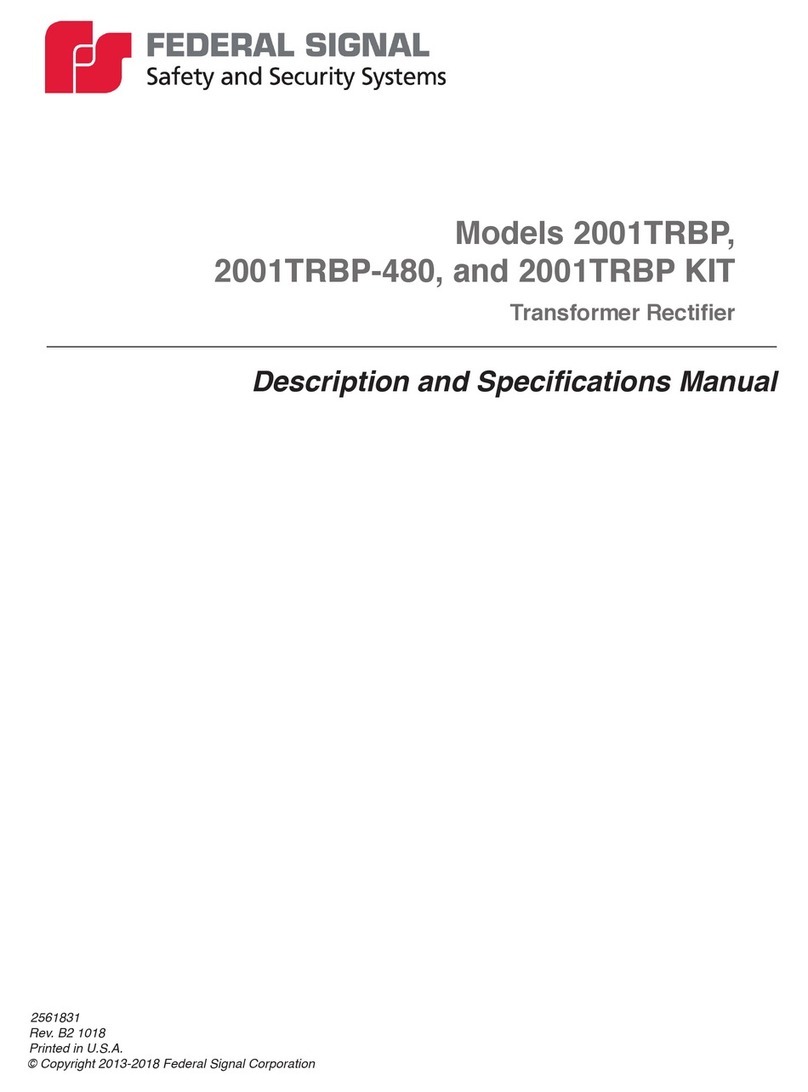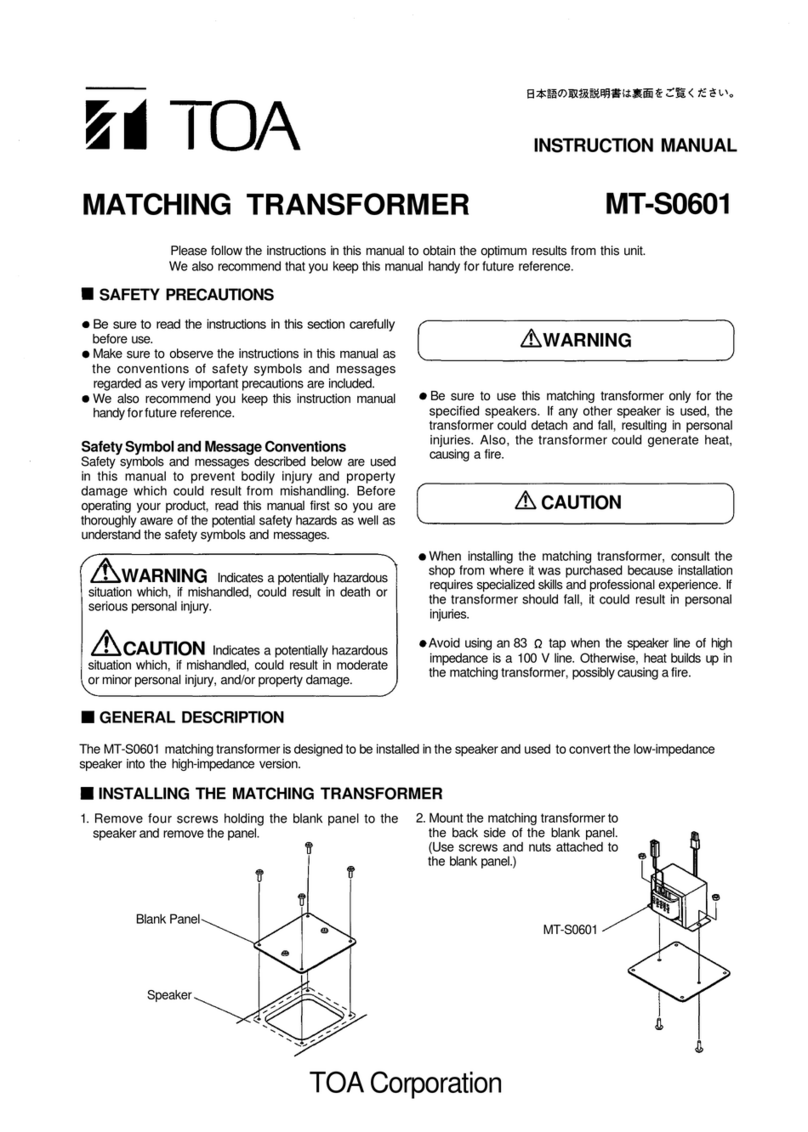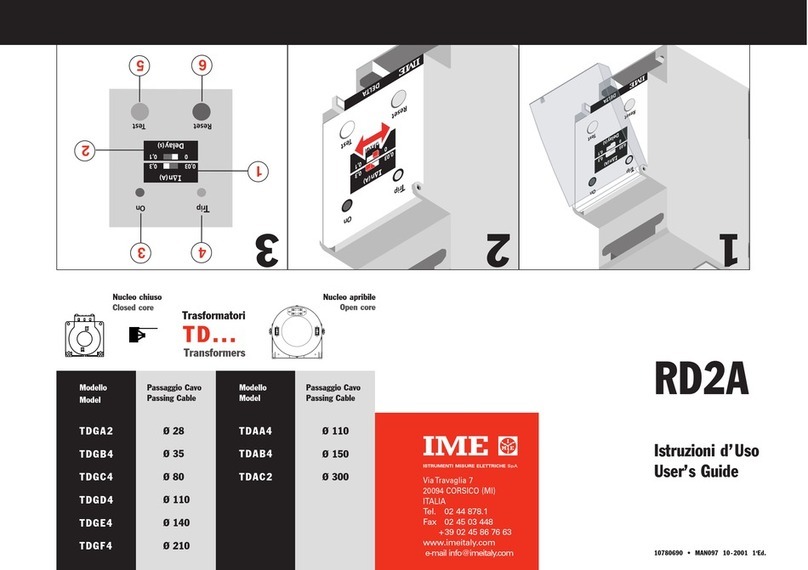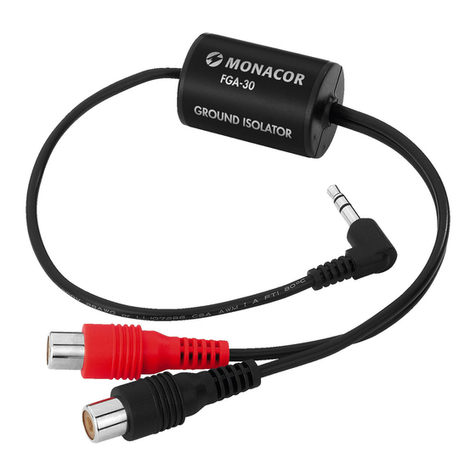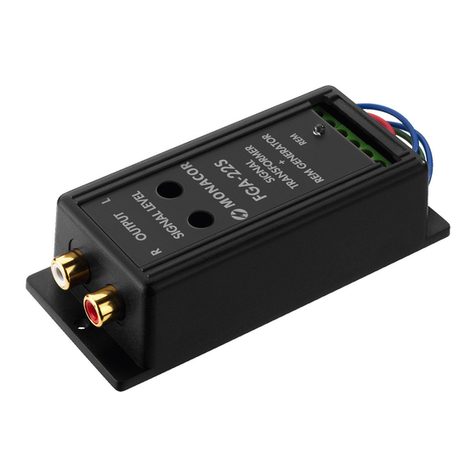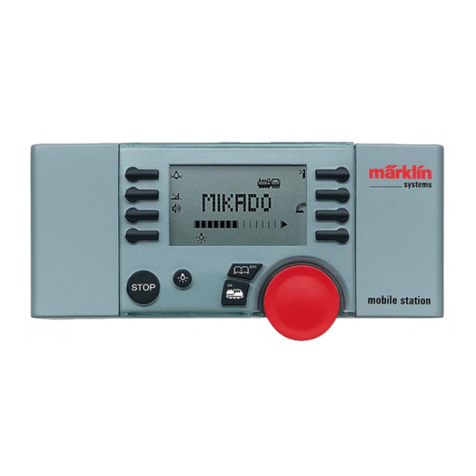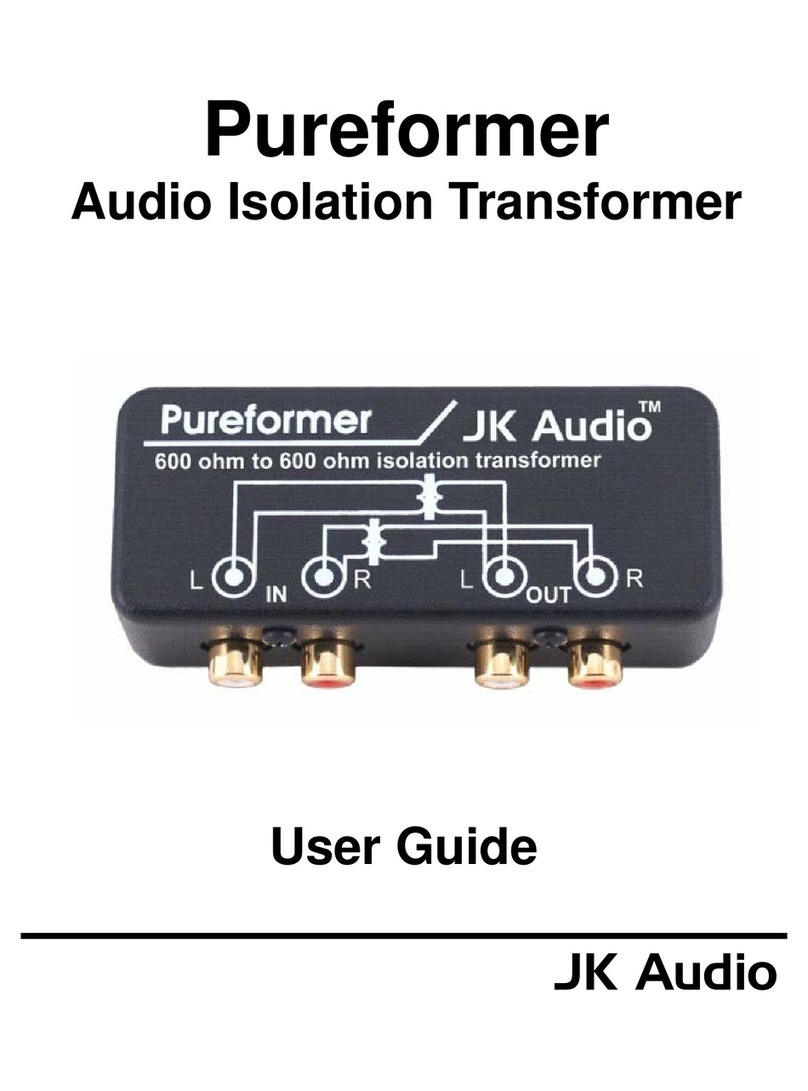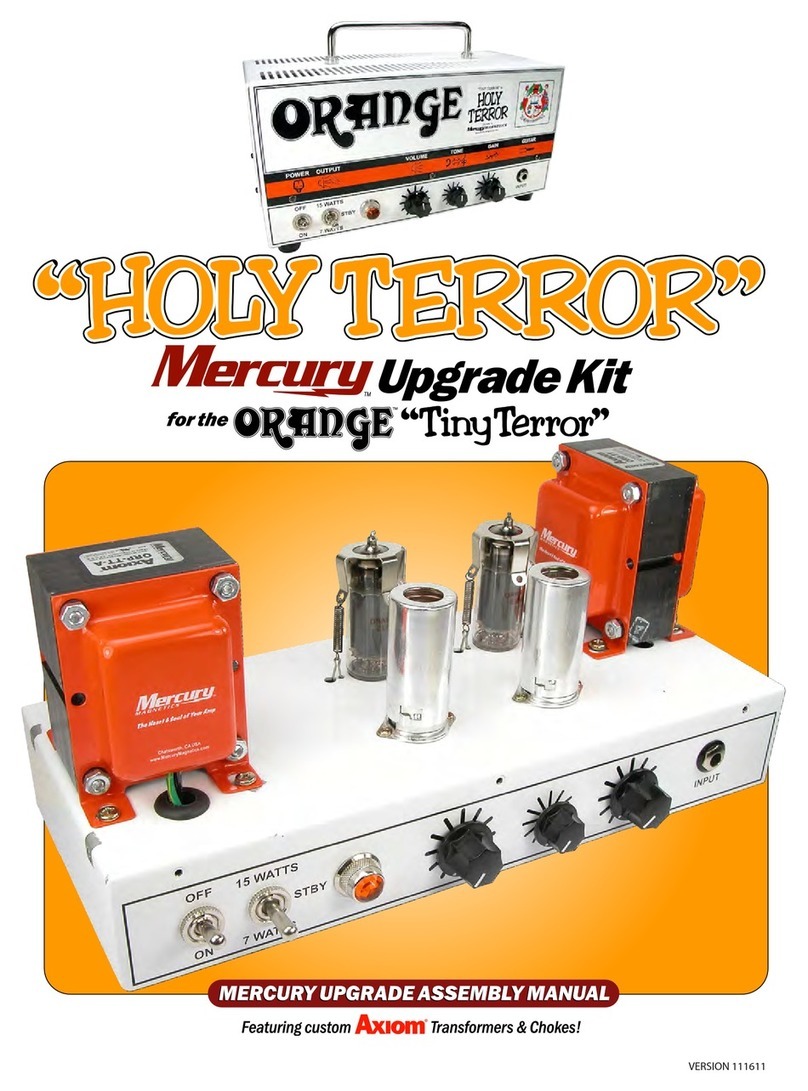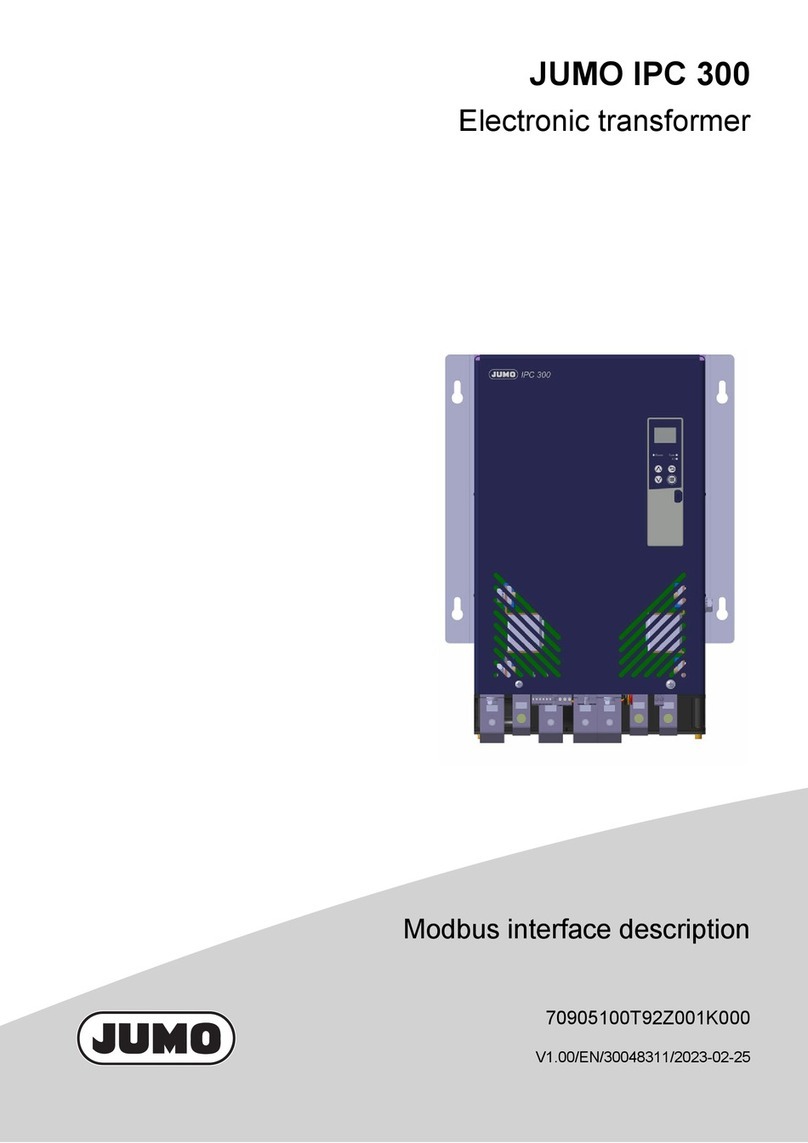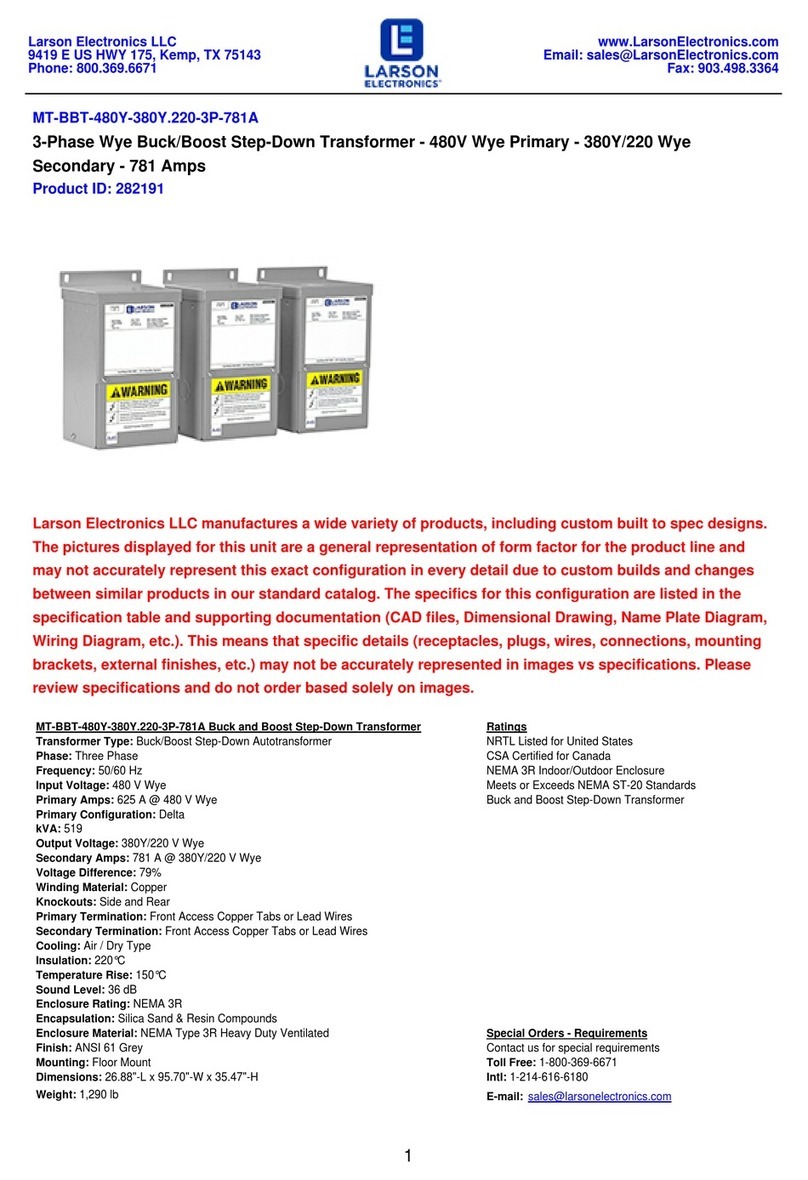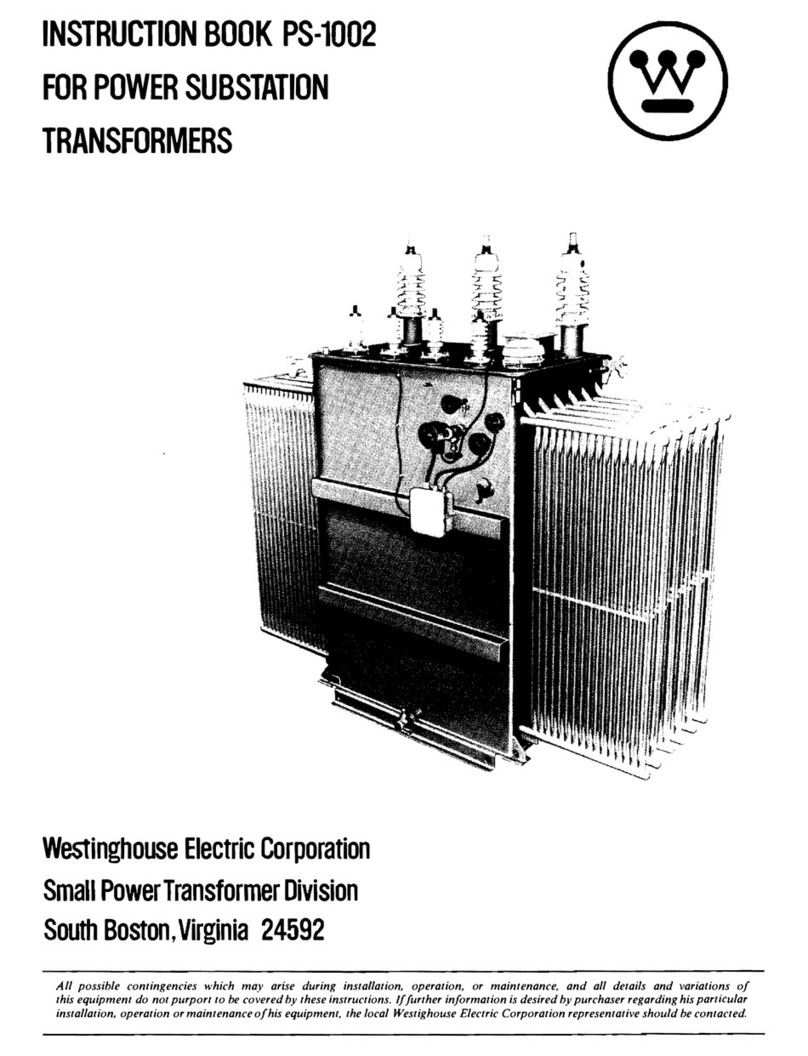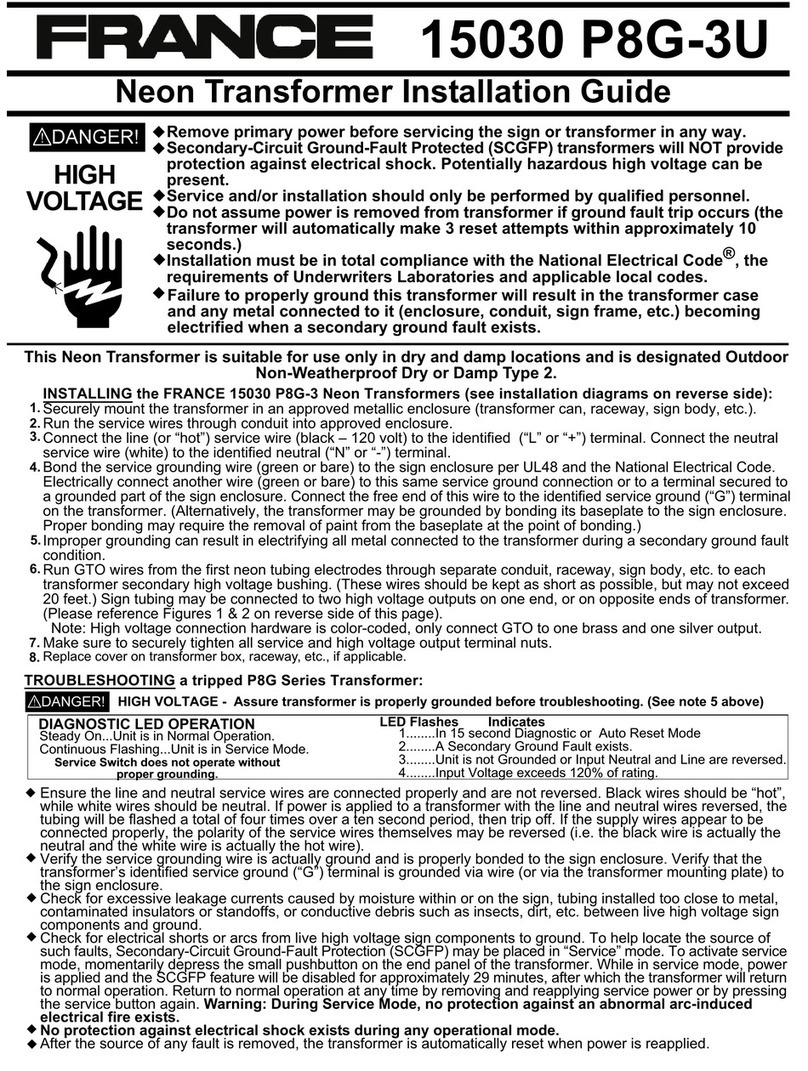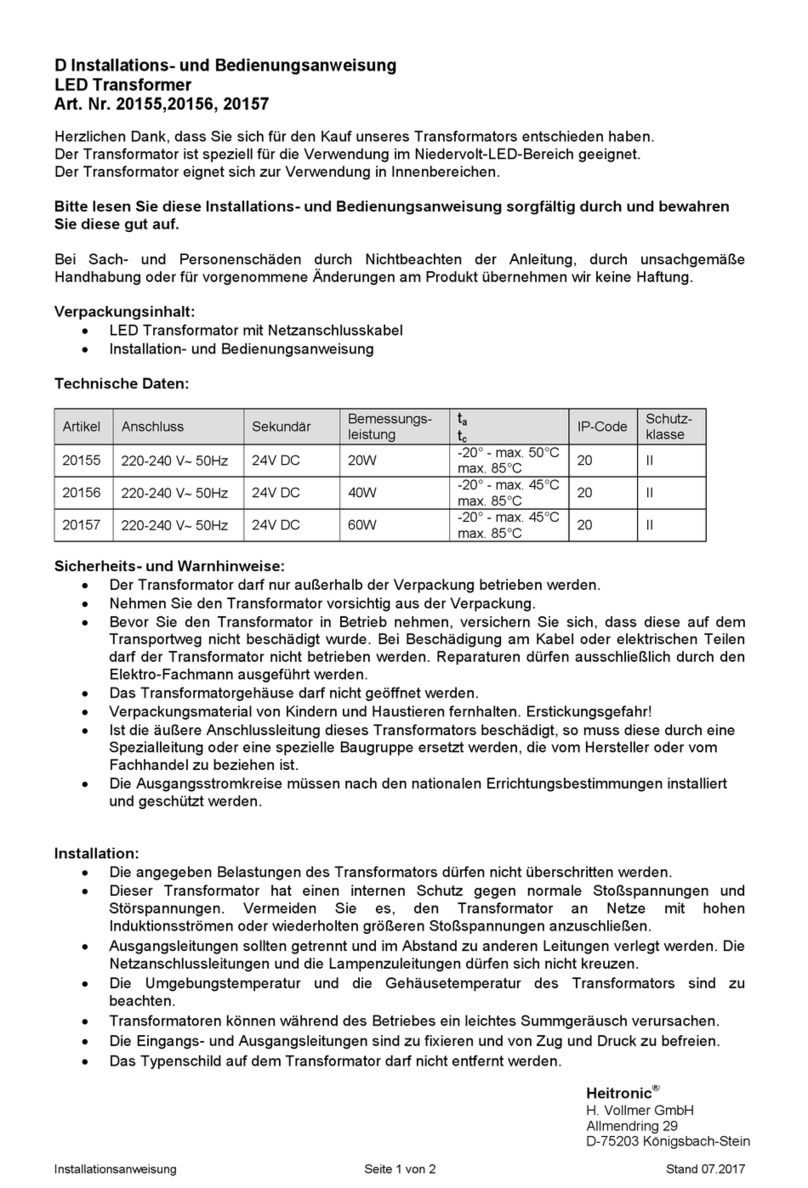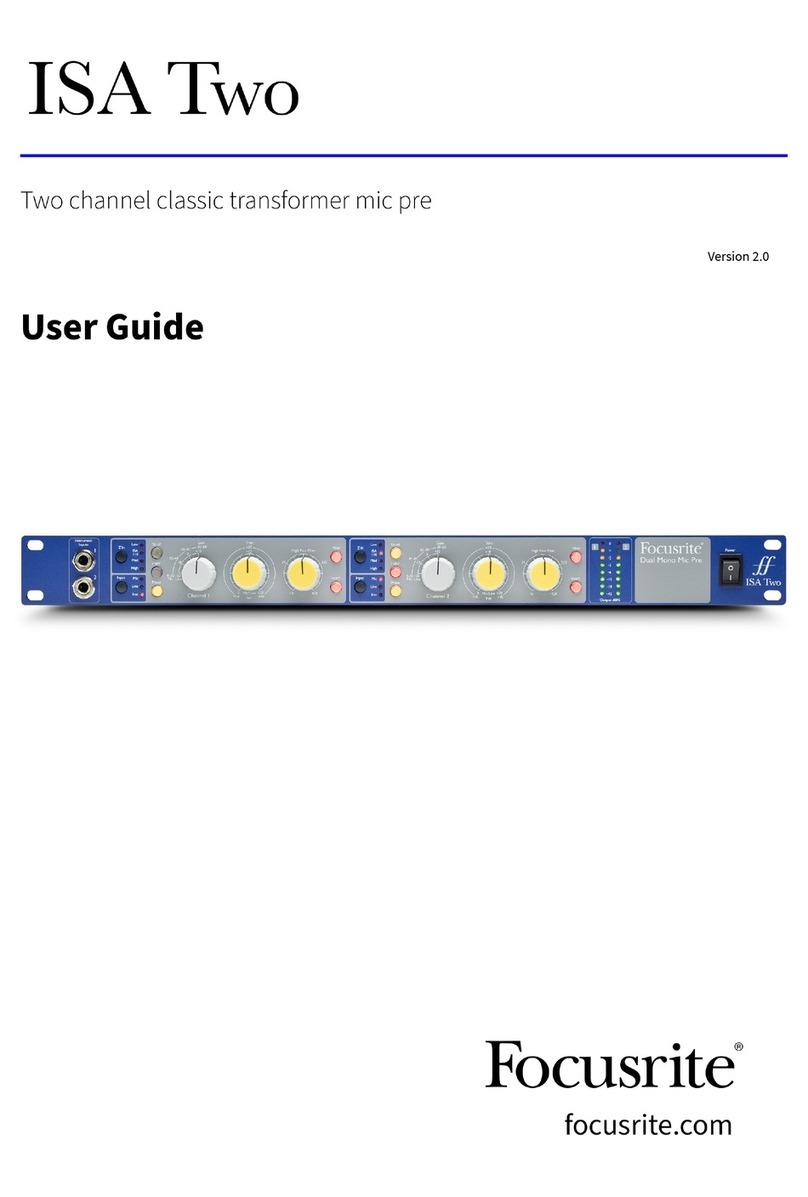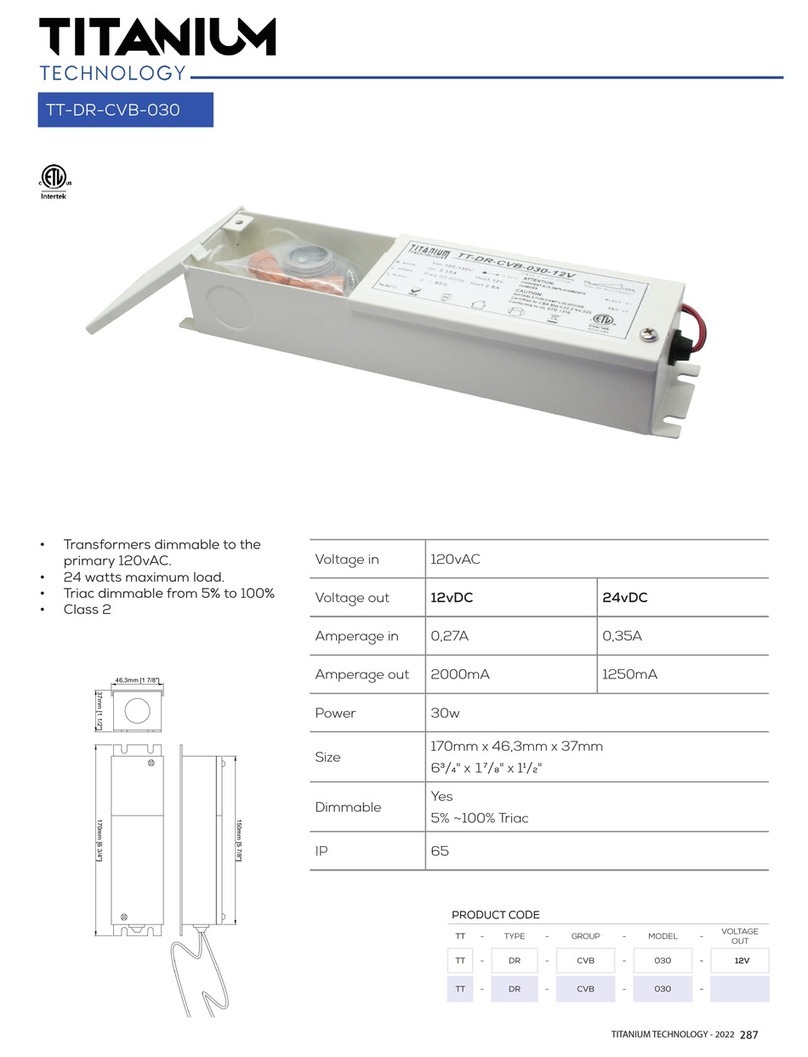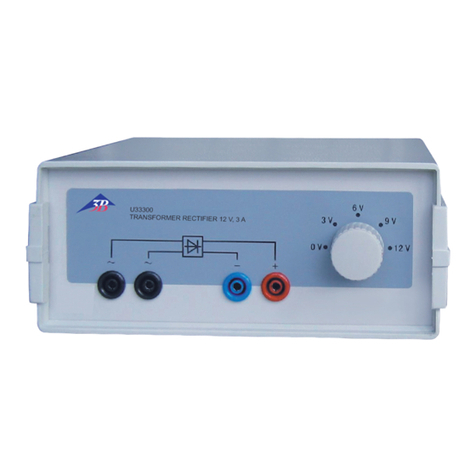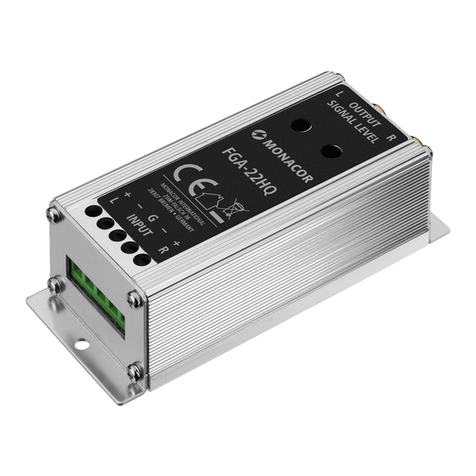Federal Signal Corporation 2001-AC User manual

Description, Specications, Installation,
Operation, and Service Manual
255252
Rev. L5 0822
Printed in U.S.A.
© Copyright 2014-2022 Federal Signal Corporation
Model 2001-AC
220 Vac-to-48 Vdc Transformer with
Contractors and Enclosure

Limited Warranty
This product is subject to and covered by a limited warranty,
a copy of which can be found at www.fedsig.com/SSG-Warranty.
A copy of this limited warranty can also be obtained by written
request to Federal Signal Corporation, 2645 Federal Signal Drive,
call +1 708-534-3400.
This limited warranty is in lieu of all other warranties, express or
implied, contractual or statutory, including, but not limited to the
warranty of merchantability, warranty of tness for a particular
purpose and any warranty against failure of its essential purpose.
2645 Federal Signal Drive
University Park, Illinois 60484
www.fedsig.com
Customer Support 800-548-7229 • +1 708 534-3400
Technical Support 800-524-3021 • +1 708 534-3400
All product names or trademarks are properties of their respective owners.

3
Description, Specications, Installation, Operation, and Service Manual
Federal Signal www.fedsig.com
Contents
Safety Messages......................................................................................................................................................5
General Description ................................................................................................................................................8
Overview .............................................................................................................................................................8
Features..............................................................................................................................................................9
Contactor Activation ............................................................................................................................................9
Radio Control ......................................................................................................................................................9
Battery Backup....................................................................................................................................................9
Specications ..........................................................................................................................................................9
Unpacking the Kit..................................................................................................................................................10
Installation.............................................................................................................................................................. 11
Locating the Transformer .................................................................................................................................. 11
Preliminary ........................................................................................................................................................13
Installation Requirements .................................................................................................................................13
Mounting on a Pole ...........................................................................................................................................13
Mounting on a Flat Surface...............................................................................................................................14
Electrical Connections ......................................................................................................................................17
Connecting the Transformer/Rectier .......................................................................................................18
Connecting the Contactor Enclosure ........................................................................................................19
Connecting the Siren ................................................................................................................................20
Connecting the Control Unit (Optional).....................................................................................................20
Maintenance...........................................................................................................................................................21
Testing...............................................................................................................................................................21
Inspection..........................................................................................................................................................21
Troubleshooting ....................................................................................................................................................21
Getting Service ......................................................................................................................................................23

4
Model 2001-AC
Federal Signal www.fedsig.com
Tables
Table 1 Electrical Requirements for the Transformer/Rectier...........................................................................9
Table 2 Contactors ..................................................................................................................................................9
Table 3 Environmental ..........................................................................................................................................10
Table 4 Physical.....................................................................................................................................................10
Table 6 Contactor Enclosure ................................................................................................................................10
Table 7 2001TRBP Contents ................................................................................................................................. 11
Figures
Figure 1 2001-AC Components ..............................................................................................................................8
Figure 2 Typical Siren Installation Drawing ........................................................................................................12
Figure 3 Contactor Enclosure Assembly Drawing ............................................................................................. 15
Figure 4 Transformer/Rectier .............................................................................................................................16
Figure 5 Typical Wiring Diagram..........................................................................................................................17
Figure 6 Transformer/Rectier Schematic Diagram...........................................................................................19
Figure 7 Terminal Block in Siren..........................................................................................................................19

5
Safety Messages
Description, Specications, Installation, Operation, and Service Manual
Federal Signal www.fedsig.com
Safety Messages
It is important to follow all instructions shipped with this product. This device is to be
installed by trained personnel who are thoroughly familiar with the country’s electric
codes and will follow these guidelines as well as local codes and ordinances, including
any state or local noise control ordinances.
Listed below are important safety instructions and precautions you should follow:
Important Notice
Federal Signal reserves the right to make changes to devices and specifications
detailed in the manual at any time in order to improve reliability, function, or design. The
information in this manual has been carefully checked and is believed to be accurate;
however, no responsibility is assumed for any inaccuracies.
Publications
Federal Signal recommends the following publications from the Federal Emergency
Management Agency for assistance with planning an outdoor warning system:
• The “Outdoor Warning Guide” (CPG 1-17)
• “Civil Preparedness, Principles of Warning” (CPG 1-14)
• FEMA-REP-1, Appendix 3 (Nuclear Plant Guideline)
• FEMA-REP-10 (Nuclear Plant Guideline).
Planning
• If suitable warning equipment is not selected, the installation site for the siren is not
selected properly, or the siren is not installed properly, it may not produce the in-
tended optimum audible warning. Follow Federal Emergency Management Agency
(FEMA) recommendations.
• If sirens are not activated in a timely manner when an emergency condition exists,
they cannot provide the intended audible warning. It is imperative that knowledge-
able people, who are provided with the necessary information, be available at all
times to authorize the activation of the sirens.
• When sirens are used out of doors, people indoors may not be able to hear the warn-
ing signals. Separate warning devices or procedures may be needed to eectively
warn people indoors.
• The sound output of sirens can cause permanent hearing damage. To prevent exces-
sive exposure, carefully plan siren placement, post warnings, and restrict access to
areas near sirens. Review and comply with any local or state noise control ordinances
as well as OSHA noise exposure standards, regulations, and guidelines.
• Activating the sirens may not result in people taking the desired actions if those to
be warned are not properly trained about the meaning of siren sounds. Siren users
should follow FEMA recommendations and instruct those to be warned of the correct
actions to be taken.

6
Safety Messages
Model 2001-AC
Federal Signal www.fedsig.com
• After installation, service, or maintenance, test the siren system to confirm that it is
operating properly. Test the system regularly to confirm that it will be operational in
an emergency.
• If future service and operating personnel do not have these instructions to refer to,
the siren system may not provide the intended audible warning, and service person-
nel may be exposed to death, permanent hearing loss, or other bodily injuries. File
these instructions in a safe place and refer to them periodically. Give a copy of these
instructions to recruits and trainees. Also give a copy to anyone who is going to ser-
vice or repair the siren.
Installation and Service
• Electrocution or severe personal injury can occur when performing various instal-
lation and service functions, such as making electrical connections, drilling holes,
or lifting equipment. Therefore, only experienced and qualified electricians should
install this product in compliance with national, state, and any other applicable codes,
ordinances, and regulations. Perform all work under the direction of the installation or
service crew safety foreman.
• The sound output of sirens is capable of causing permanent hearing damage. To pre-
vent excessive exposure, carefully plan siren placement, post warnings, and restrict
access to areas near the sirens. Sirens may be operated from remote control points.
Whenever possible, disconnect all siren power, including batteries, before working
near the siren. Review and comply with any local or state noise control ordinances as
well as OSHA noise exposure regulations and guidelines.
• After installation or service, test the siren system to confirm that it is operating proper-
ly. Test the system regularly to confirm that it will be operational in an emergency.
• If future service and operating personnel do not have these instructions to refer
to and are not properly trained, the system may not provide the intended audible
warning, and service personnel may be exposed to hazards that could result in death,
permanent hearing loss, or other bodily injuries. File these instructions in a safe place
and refer to them periodically. Give a copy of these instructions to recruits and train-
ees. Also give a copy to anyone who is going to service or repair the siren.
Operation
Failure to understand the capabilities and limitations of your siren could result in
permanent hearing loss, other serious injuries, or death to persons too close to the sirens
when you activate them or to those you need to warn. Carefully read and thoroughly
understand all safety notices in this manual and all operations-related items in all
instruction manuals shipped with the equipment. Thoroughly discuss all contingency
plans with those responsible for warning people in your community, company, or
jurisdiction. A well-written contingency plan document is recommended.

7
Safety Messages
Description, Specications, Installation, Operation, and Service Manual
Federal Signal www.fedsig.com
Hazard Classification
Federal Signal uses signal words to identify the following:
DANGER indicates a hazardous situation which, if not avoided, will result in death or
serious injury.
WARNING indicates a hazardous situation which, if not avoided, could result in death or
serious injury.
CAUTION indicates a hazardous situation which, if not avoided, could result in minor or
moderate injury.
NOTICE is used to address practices not related to physical injury.
Read and understand the information contained in this manual before attempting
to deploy or service the siren.
Pay careful attention to notices located on the equipment.

8
General Description
Model 2001-AC
Federal Signal www.fedsig.com
General Description
Overview
Federal Signal has a variety of hardware to power and control mechanical 48 Vdc
powered sirens. The 2001-AC is a power and control system for mechanical type sirens.
The 2001-AC consists of a nominal 220 Vac-to-48 Vdc Transformer Rectifier for power and
a Contactor Enclosure with fusing and contactors for switching power to a siren. Activate
the contactors by a simple switch, equipment using landlines, IP using IP network devices,
or by radio with Federal Signal FC Controllers. Typical 2001-AC systems are one-way
systems with no reporting or monitoring. In addition, 2001-AC systems are typically reliant
on the AC power grid for power. Loss of AC power results in no siren activation. For life
safety, Federal Signal recommends using the DCFCTBD system with two-way system
monitoring and battery backup in case of AC power loss.
The 2001-AC converts 208/220/240 Vac to nominal 48 Vdc and provides relay contactors
to switch 48 Vdc to external equipment (such as a siren).
The 2001-AC consists of two enclosures that you can separately mount for ease of
installation. (See Figure 1.) The 2001-AC consists of the following:
• NEMA4 enclosure with two contactors for chopper and rotate motors (Contactors are
commonly referred to as motor starters.)
• Transformer/Rectifier (rainproof)
The Contactors Enclosure switches 48 V power to the siren and rotator motors from
the Transformer/Rectifier. The Transformer/Rectifier enclosure contains the step-down
Transformer/Rectifier, which provides the 48 Vdc for powering the siren.
Figure 1 2001-AC Components
Contactor
Enclosure
Transformer/Rectifier

9
Specications
Description, Specications, Installation, Operation, and Service Manual
Federal Signal www.fedsig.com
Features
The 2001-AC has the following features:
• Operates from either 208, 220, or 240 Vac single phase, 50-60 Hz
• Contactor enclosure is supplied with a padlock hasp for security
• Provides 115 Vdc for optional AC accessories
Contactor Activation
You can control the contactors by any device with relay or transistor outputs with a rating
of at least 1 ampere, 50 Vdc (for example, an FC Controller).
Radio Control
You can remotely activate the contactors by a radio signal when an FC Controller is used.
Activation by radio control has the advantage that physical control lines are not required.
The FC Controllers are capable of both radio and local button control. These controllers
are available in UHF and VHF bands. Landline, cellular, satellite, and IP options are
available. Contact your local Federal Signal representative for further information. See
Getting Service.
Battery Backup
You can upgrade the 2001-AC to a battery-backed system, which automatically switches
from AC primary operation to DC backup operation in the event of a power failure.
Contact your local Federal Signal representative for further information on battery backup
systems. See Getting Service.
Specications
Table 1 Electrical Requirements for the Transformer/Rectier
Rated Capacity 6.5 KVA
Rated Frequency 50-60 Hz
Input Voltage 208/220/240 Vac (+/- 10%), single phase
Input Current 40/38/36 A
Output Voltage 46 Vdc at 130 A dc
115 Vac at 10 A ac
Max. continuous
runtime
60 minutes
Max. duty cycle 50%
AC Fuse Type FRN time delay, rated 1.25x input
current
Table 2 Contactors
Contact Rating 200 A at 48 Vdc
Coil 48 Vdc, 110 ohms
Contactor Fusing 200 A (fast)

10
Unpacking the Kit
Model 2001-AC
Federal Signal www.fedsig.com
Table 3 Environmental
Operating Temperature 30°C to +65°C (-22°F to 149°F)
Humidity 0-98% Non-Condensing
Table 4 Physical
Contactor Enclosure NEMA4
Contactor Enclosure
Dimensions (H x W x D)
13.5 x 10 x 6 inches
(34.3 x 25.4 x 15.3 cm)
Contactor Weight 16.0 pounds (7.2 kg)
Transformer/Rectier Rainproof
Transformer/Rectier
Dimensions (H x W x D)
25.8 x 10.2 x 13.6 inches
(65.5 x 25.9 x 34.5 cm)
Transformer/Rectier
Weight
186 lb (84 kg)
Unpacking the Kit
Ensure that the parts listed are included in the package. If you are missing any parts,
contact Customer Support. See Getting Service.
Table 6 Contactor Enclosure
Required Description Part Number
1 NEMA4 cabinet 170314A
1 Mtg. plate 8574025A
2 Contactor 131A183C
1200 A Fuse 148A147A
2 Term. block Fuse 8402A066A
4 Screw, Thd Frm #8 7011A101-12
1 Buss Bar 8402109A
4 Screw, Thd Frm #8 7011A069-06
6 Screw, Pan head, 4-40 7000444-05
6 Int, Tooth, Lock Washer 7075A080
1 Buss Bar 8402096A
1 Flat Washer 7072A032
4 Keps nut, 5/16-18 7058A033
1 Plug, Hole, Ø1.38 inches 231194-01
1 Snubber Cap, PCBA 20000216

11
Installation
Description, Specications, Installation, Operation, and Service Manual
Federal Signal www.fedsig.com
Table 7 2001TRBP Contents
Description 2001TRBP
includes
2001TRBP Service
Part Number
Transformer rectier 120246F Q120246F
48 Vdc Contactor 131A182C Q131A182C
Fused wire 1461132A
Snubber 20000216
Pan Head screw (2) 7011A069-08
Brass washer 70700520
2 position buss bar 8402109A
Buss bar rt angle 8402138A
Diode Rectier 115336A Q115336A
Installation
ELECTROCUTION HAZARD: Electrocution or severe personal injury can occur
when making electrical connections, drilling holes, or lifting equipment. Therefore,
experienced electricians, per national and local electrical codes, acting under the
direction of the installation crew safety foreman, should perform the installation.
Locating the Transformer
Mount the transformer assembly as close as possible to the control unit to keep cabling
distances as short as possible.
See "Table 4 Physical" on page 10 for the size and weight of the various components.
Ensure that the mounting surface and fasteners can safely sustain the weight.
INSTALLATION PRECAUTIONS: The 2001TRBP transformer must be permanently
mounted. All wiring must be run in a sealed conduit. The transformer may become
hot during extended use and should be installed so that it is not likely to be
contacted by people.

12
Installation
Model 2001-AC
Federal Signal www.fedsig.com
Figure 2 Typical Siren Installation Drawing
TRANSFORMER/
RECTIFIER
CONCRETE FOOTING OPTIONAL,
LOCAL CONDITIONS DETERMINE
2902337D2
GROUND LEVEL
NOTE:
1. REFER TO ALL APPLICABLE ELECTRICAL
CODES HAVING JURISDICTION FOR THE
SIREN LOCATION.
2. RUN SEPARATE GROUND WIRES FROM
THE GROUND ROD TO THE SIREN,
CONTROL, TRANSFORMER RECTIFIER
AND THE AC DISCONNECT.
TWO 8 FT. MIN. GROUND RODS
TO BE NO. 4 COPPER OR
GALVANIZED IRON, WITH TWO
CONTINUOUS NO. 6 COPPER
GROUND WIRES AND CLAMPS,
OR EQUIVALENT.
SERVICE DISCONNECT
(CUSTOMER SUPPLIED IF REQUIRED)
SIREN CABLE, 2 AWG
(CUSTOMER SUPPLIED),
WATERPROOF CONDUIT
CLAMPS
(CUSTOMER SUPPLIED,
IF REQUIRED)
TIMBER UTILITY POLE
(CUSTOMER SUPPLIED)
ENTRANCE CAP FROM
POWER SUPPLY,
(CUSTOMER SUPPLIED)
CONTACTOR ENCLOSURE
1-1/4" CRANE LIFT HOLE ON
FACE OF MOUNTING CHANNEL
INSTALL SHIMS AS
REQUIRED BETWEEN
ANGLE LEGS AND POLE.
SIREN ASSEMBLY GROUND WIRE
(NO. 6 COPPER MIN.)
CONNECT
DIRECTLY TO ONE GROUND ROD
(SEE GROUND NOTE BELOW)
TYPICAL SIREN
7 FT.
MIN.
50 FT.
TYP.

13
Installation
Description, Specications, Installation, Operation, and Service Manual
Federal Signal www.fedsig.com
Preliminary
Carefully inspect the unit for damage that may have occurred in transit. If there is any
physical damage to the unit or components, notify the carrier immediately, stating the
extent of the damage.
Installation Requirements
INSTALLATION PRECAUTIONS: Use good installation methods and follow local
ordinances for mounting cabinet.
Mounting on a Pole
The 2001-AC components are typically mounted on a pole. A typical installation showing
the relative location of the controller is illustrated in Figure 2. There are numerous
methods to use to mount the 2001-AC components. In all cases, the installation must be
rigid, secure, and free from physical shock or vibration.
Mount the Contactors Enclosure and Transformer/Rectifier separately. There are predrilled
mounting holes in each enclosure.
To attach the Contactors Enclosure and Transformer/Rectifier to the pole:
1. Use proper lifting equipment to lift the enclosures to the desired height along the
pole. Attach the Contactors to the pole at a height accessible to service personnel
but discourages vandalism.
2. Use the proper lifting equipment to hold the components against the pole. Using the
holes in each enclosure as a template, locate the holes on the pole.
Transformer/Rectier
3. Transformer/Rectifier—Drill a 3/8-inch hole at all mounting locations. Drill each hole at
least 3-1/2 inches (90 mm) deep.
4. Attach the Transformer/Rectifier Enclosure to the pole; use a minimum of three
user-supplied 1/2by5 inch lag bolts. Slide a user-supplied 1/2-inch flat washer onto
each bolt before threading the bolt into the pole.
Contactor Enclosure
5. Contactor Enclosure—Attach the enclosure to the pole using four user-supplied 1/4 by
3 inch lag bolts. Be careful not to bend the enclosure around a small diameter pole.
6. Mount a user-supplied fused disconnect switch, per local and national electric codes,
on the pole beneath or opposite the Transformer/Rectifier assembly in line with the
primary AC service.

14
Installation
Model 2001-AC
Federal Signal www.fedsig.com
Mounting on a Flat Surface
To attach the Contactor Enclosure and Transformer/Rectifier to a flat surface:
1. The 2001-AC components are mounted separately. There are predrilled mounting
holes in each enclosure for attaching the enclosures to a wall or other substantial
vertical surface. If the siren is installed on the roof of the building, it may be desirable
to install the 2001-AC components inside the building if practical.
2. Install a user-supplied, fused disconnect switch per National and Local Electrical
Codes in line with the primary AC service.
INSTALLATION PRECAUTIONS: Use good mounting practices and consult a
structural engineer, if required.

15
Installation
Description, Specications, Installation, Operation, and Service Manual
Federal Signal www.fedsig.com
Figure 3 Contactor Enclosure Assembly Drawing

16
Installation
Model 2001-AC
Federal Signal www.fedsig.com
Figure 4 Transformer/Rectier

17
Installation
Description, Specications, Installation, Operation, and Service Manual
Federal Signal www.fedsig.com
Figure 5 Typical Wiring Diagram
Electrical Connections
SHOCK HAZARD: Install the siren electrical system in compliance with local
electrical codes and NEC recommendations. Federal Signal also recommends
that all user-installed conduit connections enter from the bottom of the cabinet.
Disconnect all power and read all warnings at the beginning of this manual and
before making connections.
SHOCK HAZARD: The UV controller must be solidly connected to an earth ground.
If the siren is installed in a building, ground the system to a metallic object known
to be grounded. For pole mount installations, drive a metal rod or bar at least eight
feet into the ground, as close as practical to the base of the pole. Use a separate,
continuous 6 AWG or larger wire from the siren frame to ground and from the
cabinet of each siren control system to ground.

18
Installation
Model 2001-AC
Federal Signal www.fedsig.com
Connecting the Transformer/Rectier
SHOCK HAZARD: Disconnect AC power and make sure the Transformer is de-
energized before making or changing electrical connections. Failure to do so may
result in property damage, serious injury, or death.
To connect the Transformer/Rectifier:
1. Route 1-inch conduit between the user-supplied fused disconnect switch and the us-
er-supplied conduit fitting in the bottom of the Transformer/Rectifier enclosure.
2. Route two user-supplied wires through the conduit that was just installed between
the Transformer/Rectifier and the fused disconnect switch. Use 10 AWG or larger.
Connect the power wires as follows:
• H1-H2 for 208 VAC
• H1-H3 for 220 VAC
• H1-H4 for 240 VAC
(See "Figure 6 Transformer/Rectifier Schematic Diagram" on page 19.) Cap the
unused taps.
3. Follow the instructions included with the lightning protector (supplied) and install it in
the AC service disconnect.
4. Route 1-inch conduit between the Transformer/Rectifier Enclosure and the Contactor
Enclosure.
5. Route two user-supplied wires through the conduit that was just installed between
the Transformer/Rectifier and Contactor Enclosure. Use 3 AWG or larger.
6. Connect a red or (+) labeled wire from the Transformer/Rectifier terminal block (+) to
F1-2 of the Contactor Enclosure (user-supplied 5/16-inch ring terminal required).
7. Connect a black or (-) labeled wire from the Transformer/Rectifier terminal block (-) to
TB1 2 of the Contactor Enclosure (user-supplied 5/16-inch ring terminal required).
8. Remove any metal shavings or debris from the enclosures.
9. Ground the Transformer/Rectifier enclosure to earth ground.

19
Installation
Description, Specications, Installation, Operation, and Service Manual
Federal Signal www.fedsig.com
Figure 6 Transformer/Rectier Schematic Diagram
Connecting the Contactor Enclosure
To connect the siren to the Contactor Enclosure:
1. After drilling or punching an appropriate-sized hole in the enclosure, install a 1-inch
user-supplied electrical conduit fitting in the bottom of the enclosure and in the bot-
tom of the siren rotator housing.
2. Install a 1-inch user-supplied electrical conduit between the conduit fitting in the bot-
tom of the siren rotator housing and the conduit fitting at the bottom of the Contactor
Enclosure.
3. Route the two 2-AWG siren motor wires and the one 12 AWG rotator motor wire
(user-supplied) from the siren rotator housing to the Contactor Enclosure through the
conduit.
4. Connect the 12 AWG wire (48 Vdc) from the terminal block in the rotator housing ter-
minal 1 to the rotator control relay K1-2 (user-supplied 1/4-inch ring terminal required).
(See Figure 3, View A-A).
Figure 7 Terminal Block in Siren
5. Connect a 2 AWG wire (48 Vdc) from the terminal block in the rotator housing termi-
nal 2 to the rotor control relay K2-2 (user-supplied 1/4-inch ring terminal required).
6. Connect a 2 AWG wire (common) from the terminal block in the rotator housing termi-
nal 3 to TB1-1 in the control box (user-supplied 5/16-inch ring terminal required).
7. Tighten all connections securely to provide good electrical connections.

20
Installation
Model 2001-AC
Federal Signal www.fedsig.com
8. Remove any metal shavings or debris from the enclosures.
9. Bond the Siren, 2001-AC, and 2001TRBP to earth ground using separate continuous
runs of 6 AWG minimum gauge wire. (Do not “T” from another ground wire.)
Connecting the Siren
The 2001-AC parts list and wiring diagrams are shown in Figures 3 through 5.
• Typical connections between the siren and control unit are accomplished using us-
er-supplied wires. Two 2 AWG wires provide operating power to the siren motor. An
additional 12 AWG wire provides operating power to the rotator motor if required.
• Route the interconnecting cable through the conduit between the siren and the Con-
tactor Enclosure. A three-position terminal block in the siren housing accepts stripped
wire.
• In the Contactor Enclosure, the DC GROUND terminal block TB1 accepts user-sup-
plied 5/16-inch ring terminals, and the relays accept user-supplied 1/4-inch ring termi-
nals. The contactor coils accept user-supplied 1/4-inch spade terminals. These points
provide convenient locations for making all electrical connections.
Connecting the Control Unit (Optional)
The siren controller (purchased separately) must provide a contact closure between each
contactor (K1 and K2) coil and the DC ground, TB1. K2 controls the main siren motor and
can be held on steady or pulsed on and o for various siren sounds. K1 controls the siren
rotator motor and must be held on for the duration of the siren signal if siren rotation is
required.
Connections to the contactor coils of K1 and K2 are made at the C1 positions of each coil
using 1/4-inch spade terminals. (See Figure 3, view A-A.)
Federal Signal FC Controllers are recommended. See the FC, FCH, and FCU Models
Manual (part number 255294) for installation instructions.
Other manuals for 2001-AC
1
Table of contents
Other Federal Signal Corporation Transformer manuals
